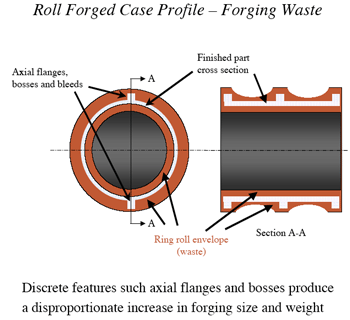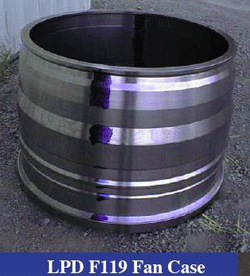The development of titanium applications via additive manufacturing
Dr David Whittaker reports exclusively for ipmd.net on this presentation.
Dr Sears began by categorising this broad range of additive manufacturing (AM) processes as:
- “Powder bed” methods – these processes generally involve the building of parts layer-by-layer by rastering an energy beam onto a bed of metal powder. The beam can be either a laser beam or an electron beam. A further, recent entrant in this category of process was identified as ultrasonic consolidation.
- Metal deposition methods – these range from those that have developed from arc welding processes (Gas Tungsten Arc Welding, Gas Metal Arc Welding, Plasma Transferred Arc Welding) to deposition technologies involving the use of lasers or electron beams to melt the feedstock material.
- Spark Plasma Sintering (SPS) – essentially, SPS is a variant of hot-pressing but with the important difference that the heating rates are much higher thus enabling the production of microstructures and materials not possible with conventional processing.
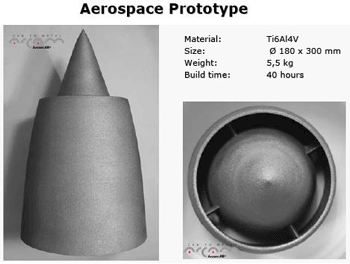
Fig. 1 Aerosapce application for AM (As presented by James Sears at PowderMet 2011, image courtesy Arcam AB, Sweden)
Fig. 2 Medical implant application (As
presented by James Sears at PowderMet
2011, image courtesy Arcam AB, Sweden)
The operating principles of a range of commercially available equipment in each of these categories were described.
AM technologies are being increasingly used for low volume manufacturing, the building of functional prototypes, the addition of features to a forged or cast preform or (particularly for the metal deposition technologies) surface modification or repair.
Examples of low volume manufacturing by AM of titanium alloy components were identified in the aerospace (Fig. 1) and biomedical implants (Fig. 2) sectors.
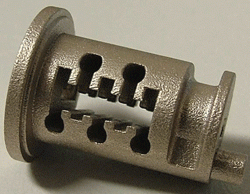
Fig. 3 Lock barrel prototype built by AM
(As presented by James Sears at
PowderMet 2011, image courtesy
Eos GmbH/Security Products UK Ltd)
The advantages of using AM to build functional prototypes (elimination of the need for tool manufacture, significantly shorter lead times) were illustrated by citing examples from the hardware (Fig. 3) and automotive (Fig. 4).
In the lock barrel shown in Fig.3, the AM process replaced a prototyping route involving 16 separate EDM operations.
The use of AM to build the automotive engine timing pulley, shown in Fig.4, allowed the prototype to be available “next day”.
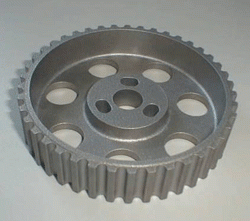
Fig. 4 Automotive pulley prototype built by
AM (As presented by James Sears at
PowderMet 2011, image courtesy Eos GmbH/
inovative product development centre)
Adding features to a forged or cast preform as opposed to machining of such features can provide the most cost-effective manufacturing option, where a significant reduction of the preform size and weight can be effected through the elimination of the need for a machining allowance. This was demonstrated using the example of a titanium alloy fan case for an aero-engine (Figs. 5 and 6).
Surface modification or repair using metal deposition AM technologies was described by citing examples in gas turbine engines (blades, seals, blisks) (Fig. 7), tools, dies and wear applications (shafts, bearings, landing gear) (Fig. 8)
Fig. 5 Material waste in machining featues on a forged Fig. 6 Fan case produced by adding
preform in conventional manufacture features with AM to a forged
preform
(As presented by James Sears at PowderMet 2011)
A question often posed to addative manufacturin practitioners is “So, you can build the shape, but what about the properties?” Dr Sears touched on this issue by presenting some published fatigue data for Ti-6Al-4V that indicate that AM material can match, or even possibly, exceed the performance of conventionally processed material (Fig. 9).
Dr Sears also drew attention to the trade-off between shape fidelity and deposition rate with the currently established AM technologies and pointed to the area of challenge in future development of “lowest cost” AM methods i.e. methods that might offer high capability against both of these parameters.
on a shaft (As presented by James Sears at PowderMet 2011)
Finally, he concluded that the main issue influencing growth in deployment of AM for titanium alloys related to raw material supply.
Firstly, with material cost being typically 40-50% of total manufacturing cost for AM titanium, material cost is a major issue.
Other material supply chain issues for both powder and wire are that reliable, sustainable sources are not always available and that supplies of certain alloys have limited availability.
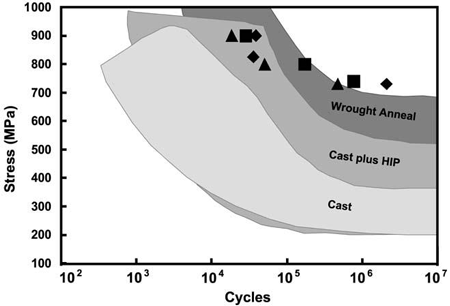
Fig. 9 Comparison of Room Temperature fatigue properties of Ti-6Al-4V processed by AM and by several conventional routes (D.Eylon , F.H.Froes and R.W. Gardiner “Developments in Titanium Alloy Casting Technology” in Titanium Technology: Present Status and Future Trends , Titanium Development Association , Dayton , Ohio ( now The International Titanium Association ), Editors F.H.Froes , D.Eylon and H.B.Bomberger , 1985 , pp.35-48 )
News | Articles | Market reviews | Search directory | Subscribe to e-newsletter



